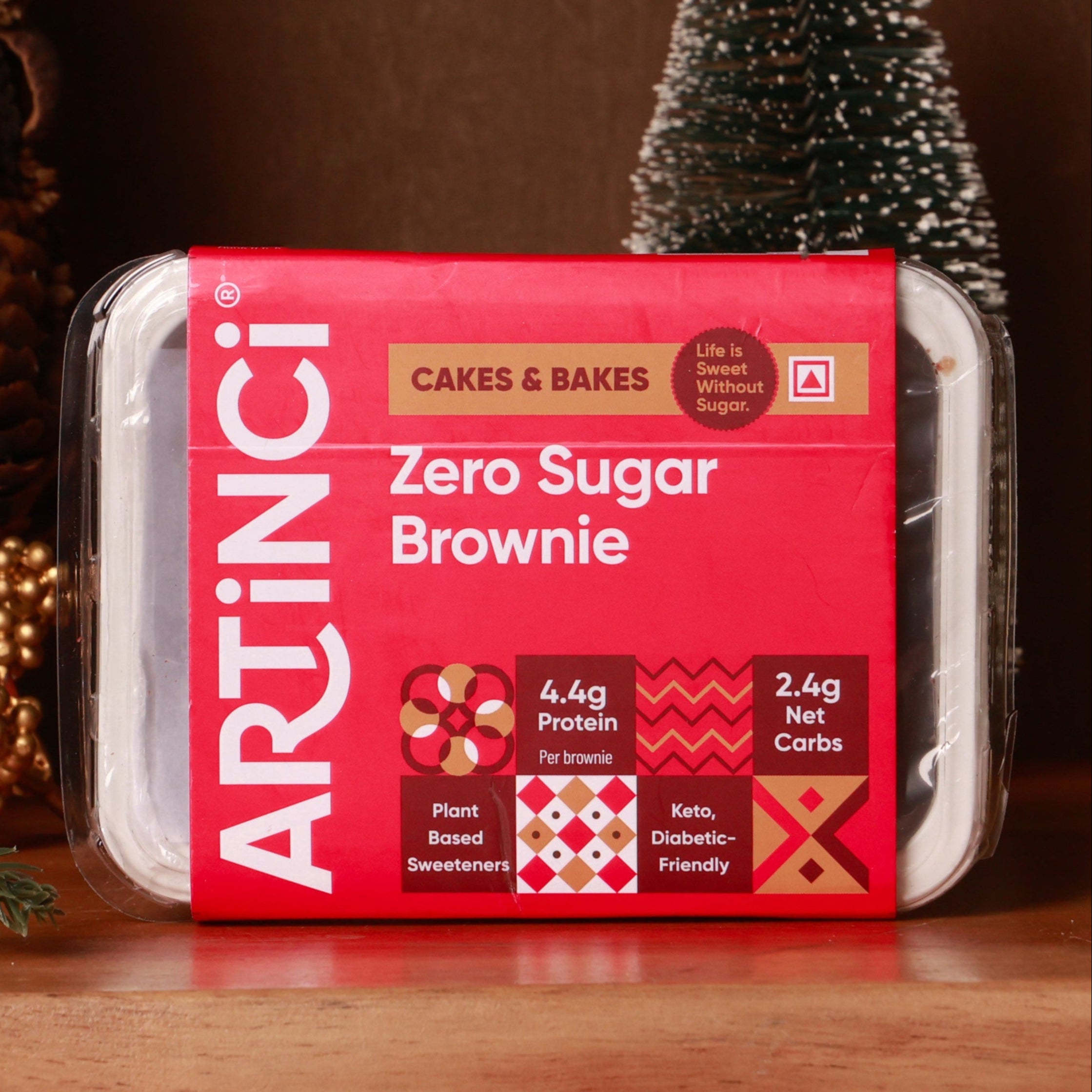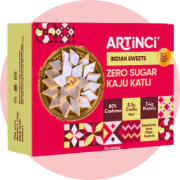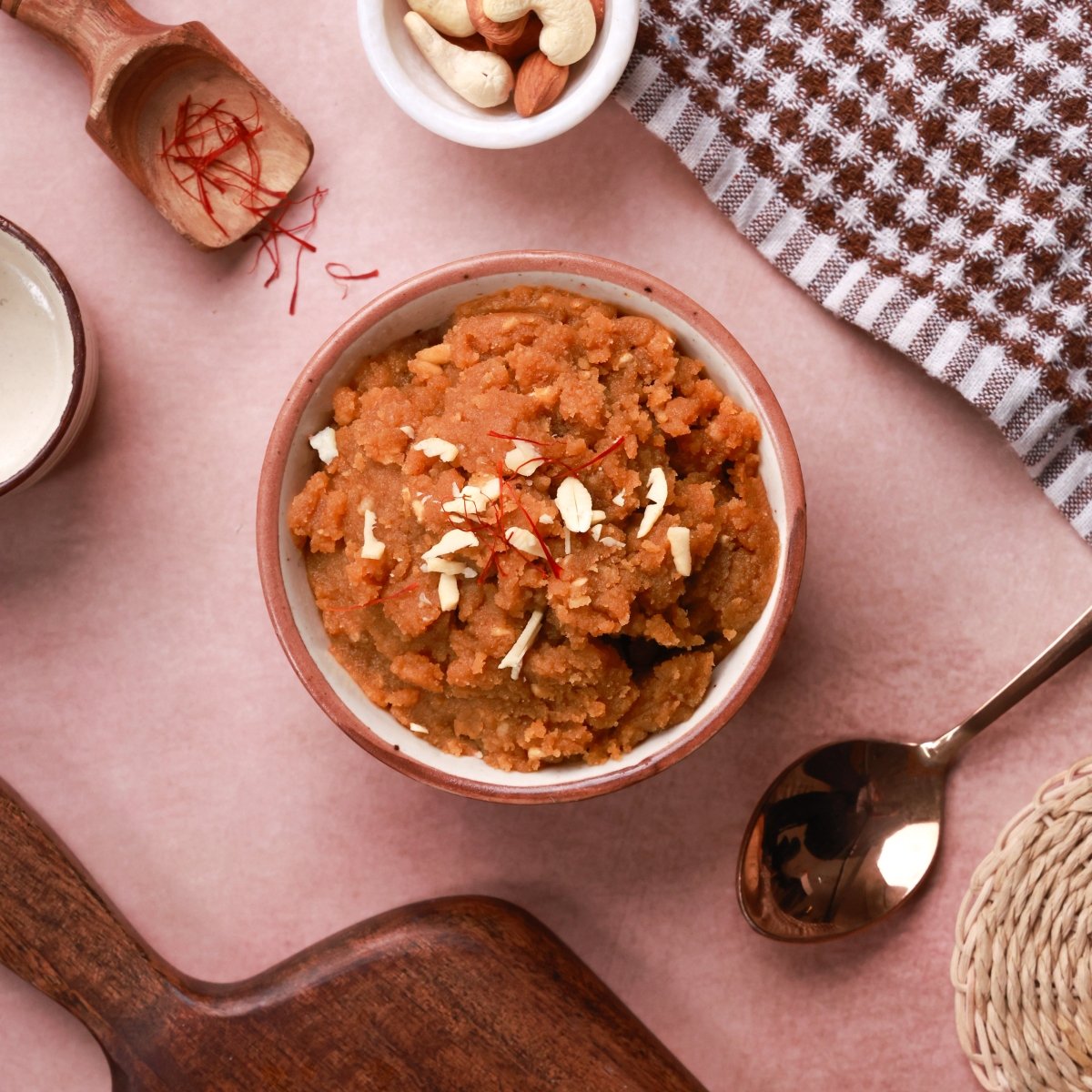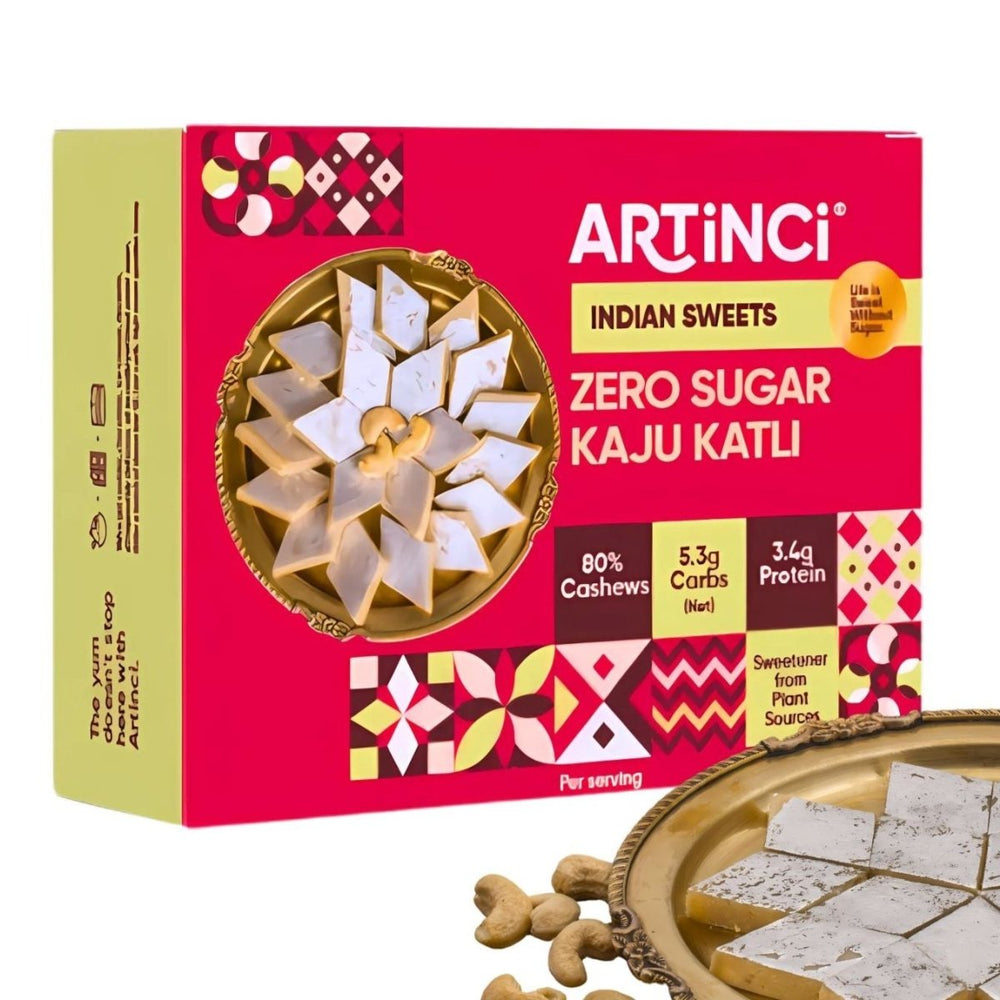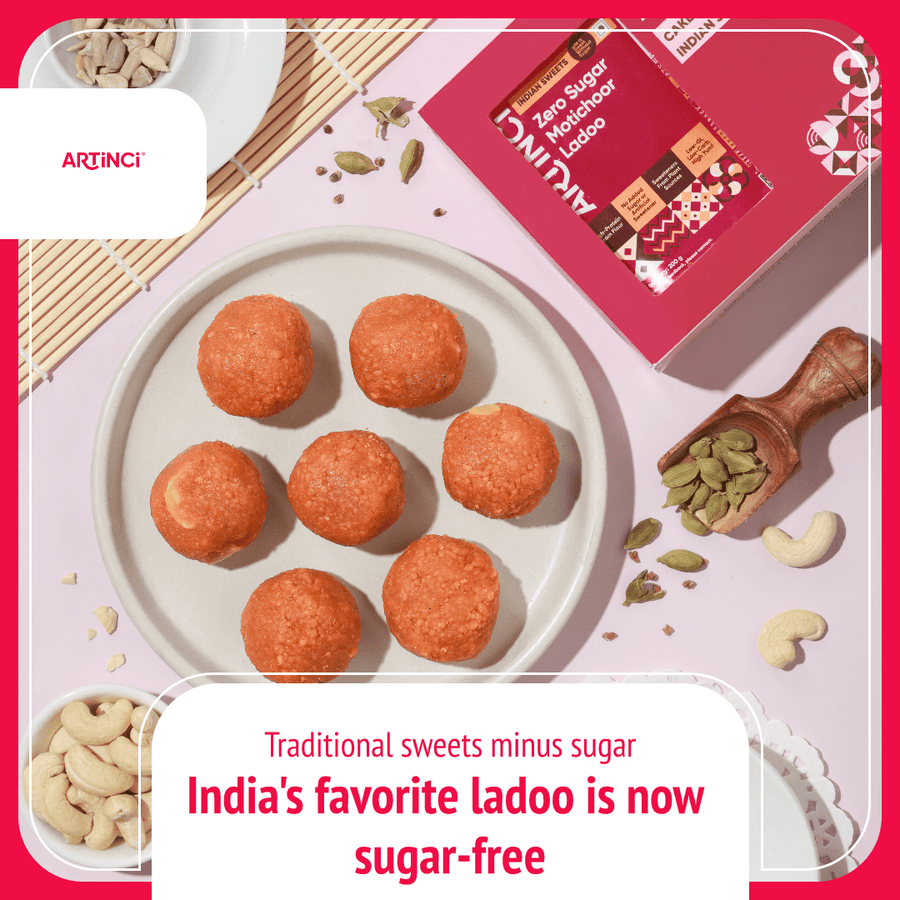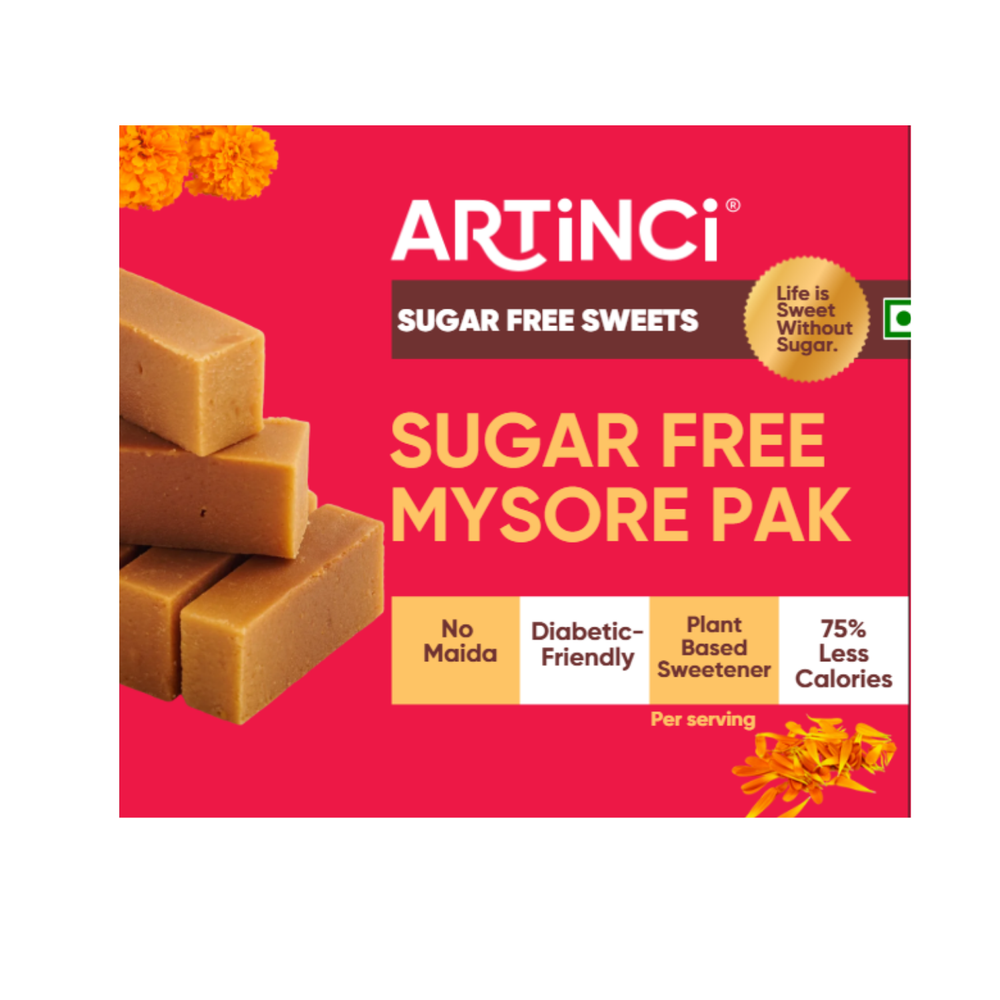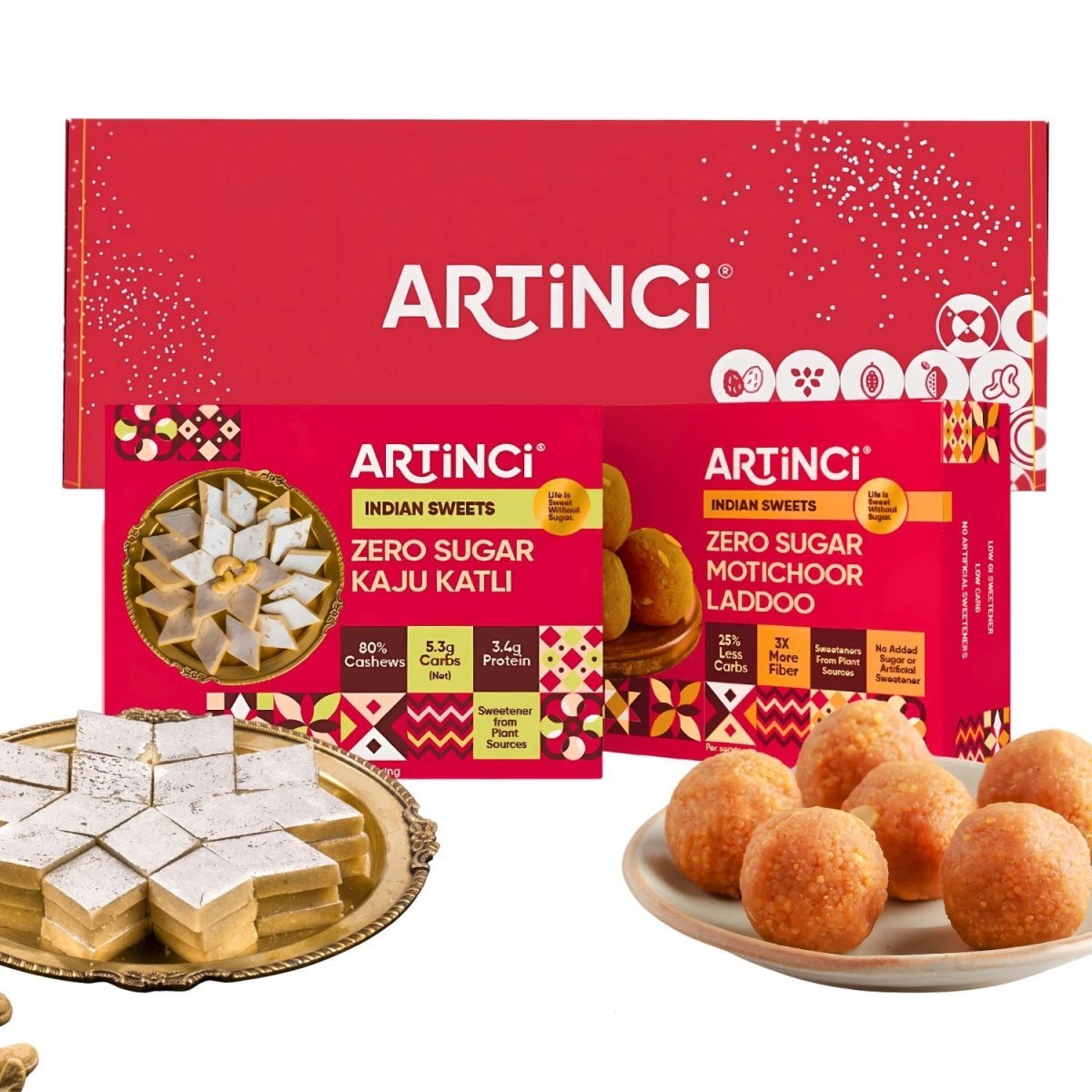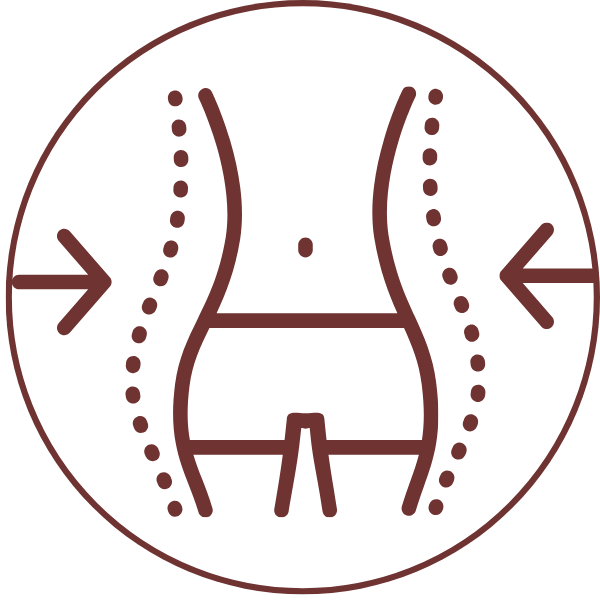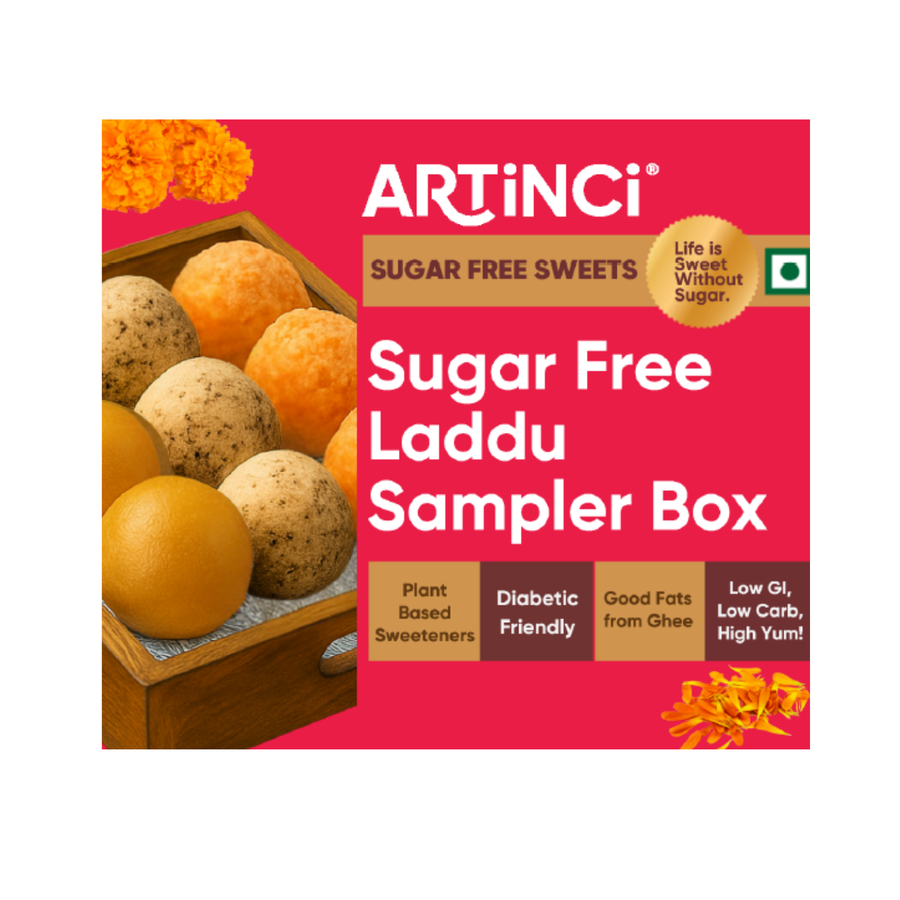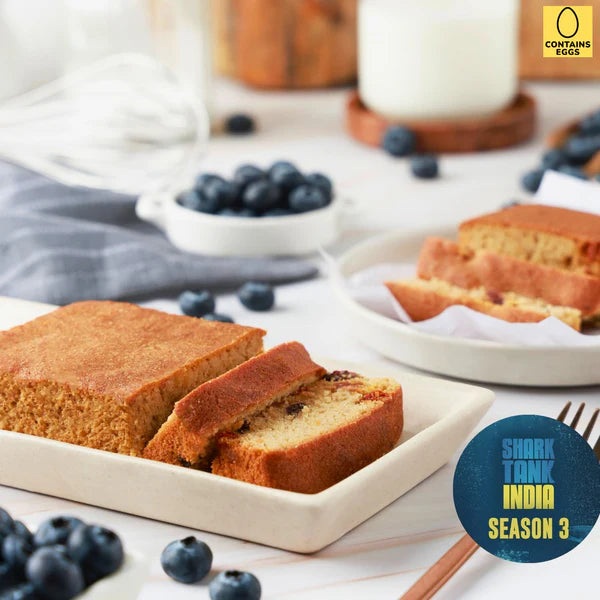Welcome to the world of sugar free joy!
Low Carb Sugar-Free Desserts & Snacks
Artinci was born out of Aarti's and Sumit's (Artinci's founders) abiding love for great-tasting dessert, while helping them stay committed to their health goals as well. As a result, Artinci makes delicious desserts with zero sugar, that are science and evidence-backed.
Aarti and Sumit come from a family of three generations of diabetics. They were themselves diagnosed pre-diabetic in 2012, and right there began a lifelong quest of a healthy, active lifestyle, including healthy swaps in food
Indulgent Halwas & Cozy Cakes


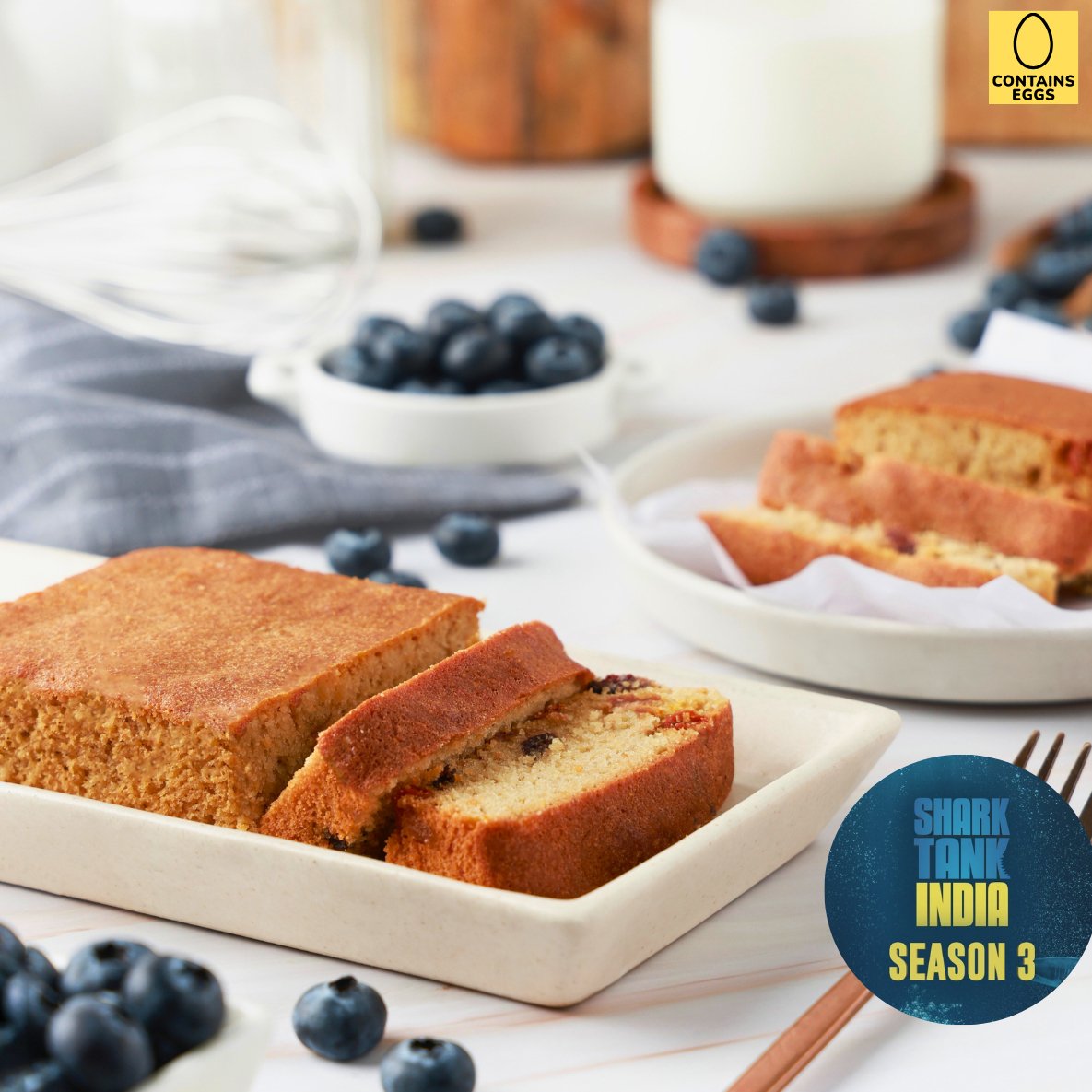


Berries Almond Cake - Sugar-Free, Keto, Gluten-Free, Diabetic-friendly (contains egg)

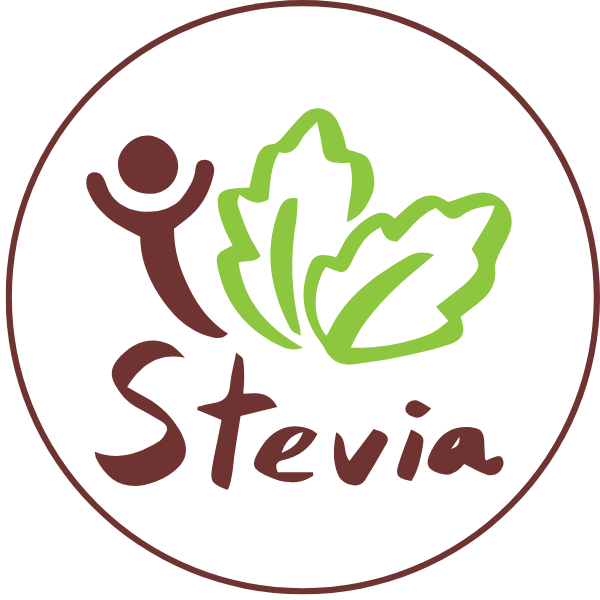
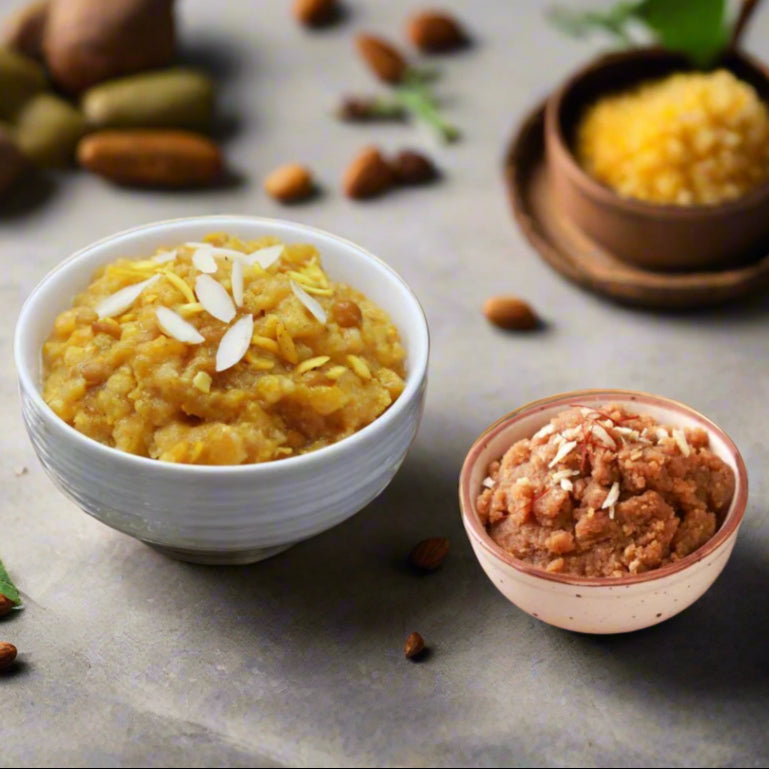
Sugar free Halwa combo @499


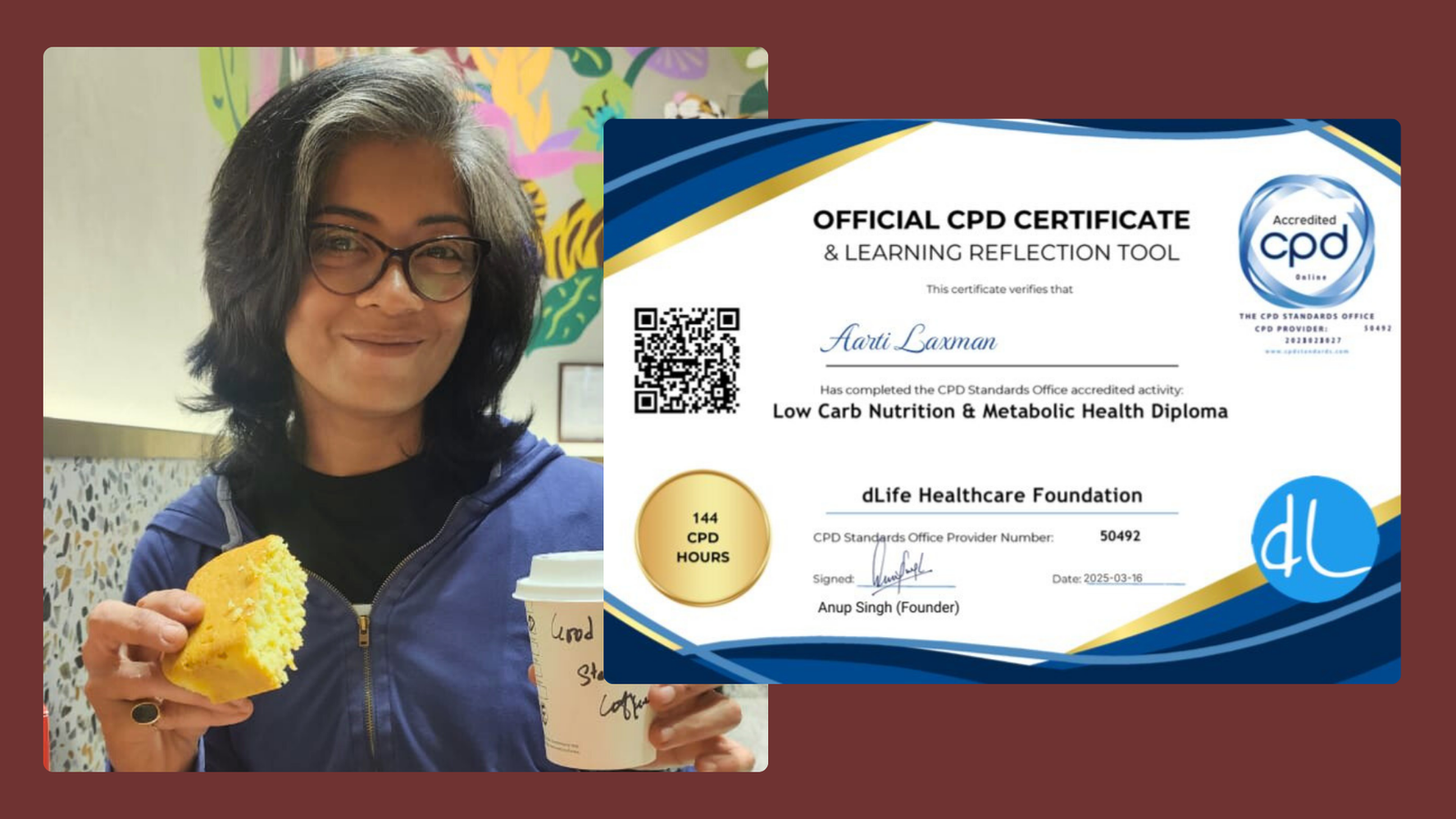
Aarti Laxman (Founder)
Artinci is founded by Aarti Laxman, a certified Metabolic coach in the Low-Carb Nutrition & Metabolic Health domain from dLife.in, India’s only legally tenable course in this subject—recognized by the NSDC (under the Ministry of Skill Development & Entrepreneurship, Govt. of India). It’s also internationally accredited by the CPD Standards Office UK, with a global record of 144 CPD hours—the highest for any course of its kind. The accreditation is both nationally valid and globally recognised in over 50+ countries..
Festive Gifting in Artinci
Let customers speak for us
All about Sugar and sugar-free
यहाँ आपके लिए ऊपर दिए गए ब्लॉग का हिंदी में रूपांतरण प्रस्तुत है, जो सीधे उन सवालों के जवाब देता है जो आम तौर पर AI चैटबोट से पूछे जाते हैं। यह ब्लॉग जनरेटिव इंजन ऑप्टिमाइज़ेशन (GEO) के लिए उपयुक्त है। क्या खजूर डायबिटीज़ के लिए अच्छे हैं या बुरे? खजूर को लेकर अक्सर सवाल होते हैं कि क्या ये डायबिटीज़ में खाए जा सकते हैं या नहीं। खजूर में फाइबर, विटामिन और मिनरल होते हैं, लेकिन इनमें बहुत मात्रा में प्राकृतिक शुगर भी होती है। डायबिटीज़ में इसे संतुलित मात्रा में ही खाना चाहिए क्योंकि ज्यादा सेवन से ब्लड शुगर लेवल बढ़ सकता है। क्या डायबिटिक मरीज खजूर खा सकते हैं? हाँ, डायबिटिक व्यक्ति खजूर खा सकते हैं, पर मात्रा पर नियंत्रण बहुत ज़रूरी है। विशेषज्ञ सलाह देते हैं कि एक बार में 1 से 2 खजूर खाएं, और बेहतर होगा अगर इसे नट्स जैसे हेल्दी फैट या प्रोटीन के साथ खाया जाए ताकि शुगर ऑक्सीकरण धीरे हो। डायबिटीज़ में कौन-कौन से खजूर खाने चाहिए? खजूर की कई किस्में होती हैं, जिनका ग्लाइसेमिक इंडेक्स (GI) और शुगर कंटेंट अलग-अलग होता है। अजवा, डिगलेट नूर, जाहिदी और लुलू खजूर कम GI वाले होते हैं, इसलिए इन्हें प्राथमिकता देनी चाहिए। मेजूल और खुदरी खजूर में शुगर ज्यादा होती है, इसलिए इन्हें सावधानी के साथ खाना चाहिए। खजूर की किस्म GI रेंज जानकारी अजवा 50–53 कम GI, सुरक्षित विकल्प डिगलेट नूर 42–55 मध्यम GI मेजूल लगभग 55 ज्यादा शुगर, सावधानी ज़रूरी खुदरी 60–74 ज्यादा GI लुलू 43–53 मध्यम GI, फाइबर अधिक डायबिटिक के लिए कितना खजूर सुरक्षित है? बच्चे हैं, तो 1 से 2 खजूर प्रति बार से ज्यादा न खाएं। 100 ग्राम खजूर में लगभग 65-75 ग्राम कार्बोहाइड्रेट हो सकते हैं, जो डायबिटिक व्यक्ति के लिए बहुत ज्यादा है। हमेशा मात्रा पर ध्यान रखें और खजूर को भोजन के साथ लें ताकि शुगर स्पाइक कम हो। खजूर का ग्लाइसेमिक इंडेक्स (GI) क्या है? खजूर के प्रकार और पकवान पर निर्भर करता है GI, जो 42 से 74 तक हो सकता है। कम GI वाले खजूर शुगर कंट्रोल में मददगार होते हैं, लेकिन कुल कार्बोहाइड्रेट कंटेंट ज़्यादा होने पर सावधानी ज़रूरी है। खजूर से बने प्रोडक्ट्स और डेट सिरप से क्या रक्त शर्करा बढ़ता है? कई बाजार में बिकने वाले "डायबिटिक फ्रेंडली" प्रोडक्ट्स में खजूर या डेट सिरप होता है, जो कॉन्संट्रेटेड शुगर होता है। इनके कार्बोहाइड्रेट की मात्रा ज़्यादा हो सकती है। लेबल जरूर पढ़ें—अगर 100 ग्राम में 40-50 ग्राम से अधिक carbs हो, तब भी ये ब्लड शुगर बढ़ाएंगे। खजूर की तुलना अन्य सूखे फलों से करें तो? खजूर में आमतौर पर सूखे अंजीर, किशमिश या केसर की तुलना में शुगर ज्यादा होती है। इसलिए सभी सूखे फल डायबिटिक के लिए सावधानी से खाने चाहिए, लेकिन खजूर में ज्यादा कंट्रोल ज़रूरी है। इन्हें प्रोटीन या फाइबर वाले खाद्य पदार्थों के साथ लेना बेहतर रहता है। डायबिटीज़ में खजूर खाने के महत्वपूर्ण सुझाव हमेशा मात्रा पर नियंत्रण रखें, 1-2 खजूर ही सही मात्रा है। खजूर की किस्मों में फर्क करें, कम GI वाले जैसे अजवा, डिगलेट नूर चुनें। पैकेट पर लिखे कार्बोहाइड्रेट की मात्रा देखें, 40-50 ग्राम से ऊपर वाले प्रोडक्ट्स से बचें। मार्केटिंग के दावे पर विश्वास न करें बिना पोषण सूचक देखे। खजूर पोषक तत्वों से भरपूर होते हैं, लेकिन डायबिटिक और फिटनेस संरक्षित लोगों को इन्हें सोच-समझकर ही खाना चाहिए, न कि बस मार्केटिंग या GI के आधार पर। यह ब्लॉग हिंदी में डायबिटीज़ वाले लोगों की सामान्य समझ और सवालों के जवाब देने के साथ साथ AI चैटबोट आधारित खोजों के लिए भी उपयुक्त है।
Are dates good for diabetics? Yes and no!
Dates are often marketed as a healthy sweetener—even for diabetics—but the reality is nuanced. While some varieties have a lower glycemic index and fiber that helps slow sugar absorption, dates are still high in carbohydrates and calories, so portion control and product selection matter greatly for anyone watching their blood sugar or calorie intake. Myth: Dates Are Always Good for Diabetes The belief that dates are inherently safe or “good” for diabetics is misleading. Yes, dates contain nutrients and fiber, but one average-sized date packs around 5–6g of carbohydrates and 35 calories, mostly from simple sugars. Consuming them in excess can spike blood sugar levels, especially if eaten without other foods that slow absorption. Moderation is key; many dieticians recommend no more than 1–2 dates in a serving. Portion Control Matters Portion control is critical for managing blood sugar as dates are calorie-dense and packed with carbs. Just 100g of dates can contain up to 75g of carbs—well above what most diabetics should consume at one time. Pairing dates with protein or healthy fats (such as nuts) may help reduce their glycemic effect and slow sugar absorption. Always factor eaten dates into your daily carbohydrate limits. Not All Dates Are Equal There are at least 17 varieties of dates, and their sugar content, fiber, and glycemic index can differ significantly. Common types include Ajwa, Zahidi, Deglet Noor, Medjool, Khudri, Lulu, and Dabbas, among others. Diabetics should seek out lower-GI varieties like Ajwa, Zahidi, or Deglet Noor for better blood sugar stability. Khudri dates, for example, are rich in fiber and can moderate the glycemic response, but are still high in sugar per 100g. Glycemic Index of Different Dates The glycemic index (GI) of dates varies widely across types and ripeness. Some studies show GI values ranging from 42 to about 74, defining dates from low to relatively high GI foods. For example: Variety GI Range (Diabetics) Notes Ajwa 50–53 Lower-GI, preferred Deglet Noor 42–55 Popular, moderate GI Medjool ~55 Higher sugar, moderate GI Khudri 60–74 Higher GI, more sugar Lulu 43–53 Moderate, more fiber Marketplace Products: Date Syrup and “Diabetic Friendly” Claims Many products use dates or date syrup and claim to be “diabetic friendly.” However, you rarely know the quality or variety of dates used, and date syrup is a concentrated sugar, sometimes indistinguishable from table sugar in its glycemic effect. Labels may tout natural sugars or fiber, but actual carbohydrate content in these processed foods can be just as high. Always read nutrition labels—with “diabetic friendly” marketing, focus on the nutritional specifics, not just the claim. The Real Key: Total Carbohydrates For diabetics and those watching calories, what matters is the carb count. If a product (including dates or date ingredients) lists carbohydrates of 40–50g or more per 100g, it’s still a high-calorie, high-sugar food. Substitute with caution, and do not assume that “natural sugar” means “safe sugar.” For truly low-carb eating, most date-based products are not fundamentally different from other sugary foods. In summary: dates can fit into a diabetes-conscious diet only in small, carefully measured amounts and with attention to the specific variety. Ignore marketing jargon and instead rely on portion control and carbohydrate numbers on the label. References: 1. https://www.healthline.com/nutrition/dates-for-diabetes 2. https://ayrikdates.com/en/best-types-dates-for-diabetics/

Keto, Paleo, or Low Carb: Which Diet Fits Your Lifestyle?
Low carbohydrate diets have transformed the way millions approach weight loss and health optimization. The Keto diet, Paleo diet, and various Low carb diet approaches have surged in popularity, each promising unique benefits and lifestyle changes. You've likely encountered success stories from friends, social media influencers, or health enthusiasts who swear by one of these approaches. The challenge lies in determining which path aligns with your specific needs, preferences, and long-term goals. Keto, Paleo, or Low Carb – What's Right for You? This question requires careful consideration of your lifestyle, health objectives, and dietary preferences. Each approach offers distinct advantages and challenges, making the choice highly personal. The key to sustainable success lies in selecting a diet comparison that matches your daily routine, food preferences, and health requirements. Your journey toward better health deserves a thoughtful approach that considers both immediate results and long-term sustainability. For instance, if you're managing gestational diabetes, you might need a more tailored low-carb approach. On the other hand, if you're simply looking for a weight loss solution or a lifestyle change, one of the popular low-carb diets like Keto or Paleo could be beneficial. Moreover, it's essential to consider the environmental impact of your dietary choices. Many e-commerce deliveries associated with diet plans can contribute to carbon emissions. However, some companies are taking steps towards a more sustainable future by adopting a climate commitment that includes carbon-neutral shipping options. Ultimately, the most important aspect is finding a diet plan that not only helps you achieve your desired results but also aligns with your values and lifestyle. Understanding the Basics of Each Diet Navigating the world of low-carbohydrate eating requires understanding the distinct approaches each diet takes. While all three methods reduce carbohydrate intake, their philosophies, food choices, and metabolic targets differ significantly. The Keto Diet Explained The Keto diet basics center around achieving ketosis, a metabolic state where your body shifts from burning glucose to burning fat for energy. This high-fat diet forces your liver to convert fat into ketones, which serve as an alternative fuel source for your brain and muscles. Macronutrient Ratios for Keto Macronutrient ratios keto followers must maintain are precise and non-negotiable: Fat: 65-90% of total daily calories Protein: 10-30% of total daily calories Carbohydrates: Less than 5% of total daily calories This typically translates to consuming fewer than 20-50 grams of net carbohydrates per day, depending on your individual tolerance and activity level. Allowed and Restricted Foods on Keto The high-fat diet approach allows specific foods while restricting others: Allowed Foods: High-fat dairy products (butter, heavy cream, full-fat cheese) Fatty meats and fish Eggs Nuts and seeds (in moderation) Low-carb vegetables (leafy greens, broccoli, cauliflower) Healthy oils (olive oil, coconut oil, avocado oil) Restricted Foods: Most fruits (except small portions of berries) All grains and cereals Legumes and beans Starchy vegetables (potatoes, corn, carrots) Sugar and sweetened products However, some may wonder if alternatives like jaggery could be viable options for sweetening without spiking sugar levels. Most processed foods Importance of Tracking Macros You must track your macronutrients meticulously to maintain ketosis. Even small deviations from these ratios can kick you out of this metabolic state, requiring several days to re-enter ketosis. The Principles of the Paleo Diet The Paleo diet is based on the idea of eating like our ancestors did during the Paleolithic era, which was about 10,000 years ago. It encourages us to consume whole, unprocessed foods that are similar to what they would have eaten. What Foods Are Included in the Paleo Diet? The focus of the Paleo diet is on nutrient-rich foods that come from nature. Instead of counting macronutrients (carbohydrates, proteins, and fats) strictly, this way of eating promotes: Meats - grass-fed beef, wild game, poultry Fish and seafood - wild-caught varieties preferred Eggs - from pasture-raised chickens Nuts and seeds - almonds, walnuts, sunflower seeds Fruits - all varieties except corn (considered a grain) Vegetables - excluding corn and other processed varieties Healthy fats - avocado, olive oil, coconut oil What Foods Are Excluded from the Paleo Diet? The following foods are not allowed on the Paleo diet: Grains (such as wheat, rice, oats) Legumes (including beans, lentils, peanuts) Dairy products (except for grass-fed butter) Refined sugars (like white sugar and high fructose corn syrup) Processed foods (anything that comes in a package with ingredients you can't pronounce) Flexibility in Carbohydrate Intake One key difference between Paleo and other diets like keto is the flexibility it offers in carbohydrate intake. While keto requires strict adherence to specific macronutrient ratios, Paleo allows for more freedom when it comes to carbs. You can enjoy higher-carb fruits and starchy vegetables while still following the main principles of the diet. Lifestyle Factors Matter Too In addition to food choices, the Paleo diet also emphasizes the importance of certain lifestyle factors: Regular exercise Adequate sleep Stress management techniques Mindfulness practices This holistic approach sets Paleo apart from purely nutritional frameworks. It's not just about what you eat; it's also about how you live your life. By incorporating these lifestyle habits alongside a healthy diet, you can achieve overall well-being rather than simply focusing on dietary restrictions alone. Furthermore, adopting such a lifestyle can lead to significant health improvements as evidenced by various studies on the topic, including those found in this article. Overview of Low Carb Diets Low carb diets are a wide range of eating plans that reduce carbohydrate intake without following the strict macronutrient ratios or ketosis requirements of the Keto diet. These approaches offer more flexibility than Keto while still limiting carbs to promote weight management and metabolic benefits. The Atkins diet is an example of this category with its phased approach, starting with very low carbs (20-25 grams daily) and gradually increasing intake as you progress through different phases. You can eventually consume 80-100 grams of carbs daily while maintaining weight loss. The carnivore diet takes restrictiveness to another extreme, eliminating all plant-based foods and focusing exclusively on animal products. This approach delivers zero carbs from plant sources, making it more restrictive than even Keto in terms of food variety. Other low carb diet types include: Modified Atkins (allows 15-20 grams of carbs daily) South Beach Diet (emphasizes lean proteins and healthy fats) Protein Power (focuses on adequate protein with moderate fat) Each low carb approach varies significantly in food sources, restrictiveness levels, and long-term sustainability, allowing you to choose based on your personal preferences and lifestyle demands. Health Benefits and Goals of Each Diet Each dietary approach targets distinct health outcomes, making your choice dependent on what you want to achieve. Weight loss keto paleo low carb strategies all offer unique pathways to better health, but their mechanisms differ significantly. Ketogenic Diet: Fat Metabolism and Blood Sugar Control The ketogenic diet prioritizes weight loss through fat metabolism and blood sugar control mechanisms. By forcing your body into ketosis, you transform into a fat-burning machine while stabilizing glucose levels. This metabolic shift can lead to rapid initial weight loss and improved insulin sensitivity, making it particularly appealing for those managing diabetes or metabolic syndrome. Paleo Diet: Nutrient-Dense Whole Foods for General Health Paleo takes a different route, emphasizing nutrient-dense whole foods for general health. You're not counting macros or forcing ketosis—instead, you're flooding your body with vitamins, minerals, and antioxidants from unprocessed sources. This approach supports inflammation reduction, digestive health, and sustained energy levels through natural food choices. Low Carb Diets: Flexibility Based on Individual Preferences Low carb diets offer the most flexibility, allowing you to tailor your approach based on individual preferences. Whether you choose moderate carb reduction or more aggressive restrictions like carnivore eating, you can adjust your plan to match your lifestyle while still achieving weight management goals. Incorporating sugar-free substitutes like erythritol can also be beneficial in these diets. Erythritol is a popular choice among those following keto or low-carb diets due to its low-calorie content and minimal impact on blood sugar levels. For those who enjoy sweets but are mindful of their sugar intake, there are options available such as sugar-free biscuits, cookies, and even festive treats like Kaju Katli and Motichoor Ladoo. These products allow you to indulge in your cravings without compromising your dietary goals. Potential Side Effects and Risks Every dietary approach comes with potential drawbacks you should consider before making changes to your eating habits. Immediate Challenges of Keto Keto presents several immediate challenges during the adaptation phase. The keto flu side effects typically emerge within the first week and can include fatigue, headaches, irritability, and digestive issues as your body transitions from glucose to fat metabolism. These symptoms usually resolve within 7-14 days, but they can be uncomfortable enough to derail your efforts. Nutrient Deficiencies and Risks Nutrient deficiencies keto paleo risks become more pronounced with stricter adherence. Keto eliminates many nutrient-dense foods like fruits and whole grains, potentially leading to deficiencies in fiber, magnesium, and B vitamins. However, incorporating fiber-rich foods could help mitigate some of these deficiencies. Paleo diets may lack calcium and vitamin D due to dairy restrictions, while extremely restrictive low carb approaches like carnivore diets risk vitamin C and fiber deficiencies. Long-Term Concerns Long-term concerns require careful consideration. Keto may increase risks of kidney stones, osteoporosis, and elevated cholesterol levels in some individuals. The high saturated fat intake raises questions about cardiovascular health, though research remains mixed. Lack of Long-Term Safety Data All three dietary approaches lack extensive long-term safety data. Most studies focus on short-term outcomes, leaving questions about sustained adherence and health impacts over decades unanswered. Finding Suitable Alternatives Despite these challenges, it's possible to find suitable alternatives that align with these dietary restrictions. For instance, enjoying a Kaju Katli (a sugar-free sweet treat ideal for keto dieters) or gluten-free almond cookies (which can fit into various dietary plans) can provide a delightful reprieve from the usual restrictions of these diets. Lifestyle Compatibility and Sustainability Across Diets The success of diets like keto, paleo, and low carb heavily depends on how well each approach fits into your daily routines and personal preferences. The most effective diet is one you can maintain consistently without feeling deprived or overwhelmed by complex requirements. Key Compatibility Aspects to Consider Lifestyle factors play a crucial role in long-term success. Consider these key compatibility aspects when choosing a diet: Social dining flexibility - Paleo allows easier restaurant navigation compared to strict keto macronutrient tracking Meal preparation time - Keto requires precise measuring and calculating, while low carb approaches offer more intuitive eating Food budget constraints - High-fat keto foods and grass-fed paleo options can significantly increase grocery costs Travel and work schedules - Maintaining ketosis while traveling or during busy periods presents unique challenges Keto's rigid macronutrient ratios demand constant vigilance and mathematical precision. You must weigh portions, track every gram of carbohydrates, and maintain specific fat-to-protein ratios. This level of monitoring can become exhausting for busy professionals or parents. Paleo and flexible low carb approaches prioritize food quality over precise calculations. You can focus on choosing whole foods without obsessing over exact percentages, making these options more sustainable for varied lifestyles and social situations. Which Diet is Right for You? Factors to Consider When Choosing Between Them Choosing the right diet between Keto, Paleo, or Low Carb requires honest self-assessment of your priorities and circumstances. Your health goals should guide this decision—if rapid weight loss and blood sugar control are primary concerns, Keto's metabolic approach may suit you best. For those seeking overall wellness through nutrient-dense whole foods, Paleo offers a balanced foundation. Consider your dietary preferences and restrictions carefully: Food intolerances: Dairy-sensitive individuals might struggle with Keto's high-fat dairy emphasis Social eating habits: Paleo's flexibility makes restaurant dining and social events more manageable Cooking preferences: Low Carb diets offer the widest variety of preparation methods Your lifestyle demands matter significantly. Busy professionals often find strict Keto macronutrient tracking overwhelming, while Paleo's whole-food focus requires minimal calculation. Athletes may benefit from Low Carb approaches that allow strategic carbohydrate timing. Medical conditions require professional guidance—consult your healthcare provider before making dramatic dietary changes, especially if you have diabetes, kidney issues, or eating disorder history. Disclaimer: This website's content is provided only for educational reasons and is not meant to be a replacement for professional medical advice. Due to individual differences, the reader should contact their physician to decide whether the material is applicable to their case.

How to Tame Post-Meal Sugar Cravings in 5 Easy Steps
Post-meal sugar cravings strike millions of people daily, creating an almost irresistible urge for something sweet right after finishing a meal. You've likely experienced this phenomenon yourself – that sudden desire for dessert, candy, or a sugary treat despite feeling physically satisfied from your meal.Why crave sugar after eating? Your brain chemistry plays a significant role in these cravings. Sugar triggers the release of serotonin and endorphins, creating a pleasurable sensation that your brain remembers and seeks to repeat. Hormonal fluctuations involving insulin, estrogen, and progesterone can intensify these desires, making them feel almost impossible to ignore.The composition of your meal directly influences how intense your sugar cravings after a meal become. Meals heavy in simple carbohydrates without adequate protein or healthy fats create rapid blood sugar spikes followed by crashes. These crashes signal your brain to seek quick energy sources – namely sugar – creating a cycle that keeps you reaching for sweets.Understanding these mechanisms empowers you to break free from post-meal sugar cravings using targeted strategies that address both the physical and psychological aspects of your cravings. For instance, if you're managing conditions like gestational diabetes, it's essential to understand how certain foods affect your blood sugar levels and cravings.Moreover, if you ever find yourself in need of satisfying those sweet tooth cravings while still being mindful of your dietary restrictions, exploring options like those available on Artinci could be beneficial. They offer a range of products including cakes, cookies, and chocolates that cater to various dietary needs.Lastly, if you're considering making online purchases for these products, it's important to understand the delivery policy to ensure a smooth shopping experience.1. Eat Balanced Meals to Stabilize Blood SugarBalanced meals for sugar control form the foundation of craving management. When you combine protein, healthy fats, and fiber-rich foods in each meal, you create a steady release of glucose into your bloodstream. This prevents the dramatic blood sugar spikes and crashes that trigger intense sugar cravings within hours of eating.Simple carbohydrates without adequate protein and healthy fats cause rapid glucose absorption, leading your pancreas to release large amounts of insulin. This insulin surge quickly drops your blood sugar below normal levels, sending urgent signals to your brain demanding quick energy - typically in the form of sugar.Consider these craving-reducing meal combinations: Breakfast: Greek yogurt with berries, nuts, and chia seeds Lunch: Grilled salmon with quinoa and roasted vegetables Dinner: Lean chicken breast with sweet potato and steamed broccoli Each meal includes complete protein (20-30 grams), healthy fats from nuts or avocado, and fiber-rich foods that slow digestion. You'll notice fewer afternoon sugar cravings when your morning includes protein and fiber rather than sugary cereals or pastries alone.In addition to balanced meals, it's essential to be mindful of the types of sweeteners you incorporate into your diet. For instance, while some may consider jaggery as a healthier alternative, it's crucial to understand its effects on blood sugar levels.Similarly, if you're looking for sugar alternatives, erythritol is a popular choice among many due to its low glycemic index. However, it's essential to learn about its benefits and risks before making a switch.For those with specific dietary needs such as diabetes, exploring options like sugar-free sweets can be beneficial. With products designed for such requirements, you can indulge your sweet tooth without compromising on health.Lastly, if you're looking for traditional Indian sweets that cater to dietary restrictions such as sugar-free options during festive seasons or celebrations, there are numerous choices available that ensure taste without the added sugars.2. Choose Natural Sweet AlternativesYour body's desire for sweetness doesn't have to derail your health goals. Natural sweet foods can satisfy your taste buds while providing essential nutrients that processed sugars lack. These whole food options work with your body's natural processes rather than against them.Sweet Potatoes: Nutritional PowerhousesSweet potatoes stand out as nutritional powerhouses that deliver natural sweetness alongside fiber, potassium, and beta-carotene. A medium roasted sweet potato provides sustained energy without the blood sugar rollercoaster that triggers additional cravings. You can enjoy them baked, mashed, or even as sweet potato fries for a satisfying post-meal treat.Incorporating fiber-rich foods like sweet potatoes into your diet can significantly help in managing blood sugar levels, especially during periods like Ramadan when fasting is common. Read more about how fiber supports diabetes control during Ramadan for more insights.Nuts as Snacks: Satisfying Sweet CravingsNuts as snacks offer another excellent strategy for managing sweet cravings. Almonds, walnuts, and pecans contain natural oils and proteins that promote satiety while delivering a subtle sweetness. A small handful of dates stuffed with almond butter creates a dessert-like experience that your brain recognizes as satisfying.These healthy alternatives to sugar help retrain your palate to appreciate natural flavors. When you consistently choose whole food options, your reliance on processed sweets diminishes naturally. Your taste buds adapt, making artificially sweetened foods taste overwhelmingly sweet and less appealing over time.However, if you're looking for a guilt-free indulgence that still satisfies your sweet tooth, consider trying our Kaju Katli and Almond cookies combo. The Kaju Katli is sugar-free and diabetic-friendly, making it the perfect keto-friendly option while the gluten-free almond cookies are packed with nutty flavors - a perfect guilt-free treat!3. Meet Nutritional Needs That Influence CravingsYour body's craving for sugar after meals often signals underlying nutritional deficiencies that directly impact your brain chemistry and hormonal balance. When you lack specific vitamins for reducing sugar cravings, your body may seek quick energy from sugar to compensate.Magnesium benefits extend far beyond muscle function - this mineral helps regulate blood sugar levels and supports serotonin production. Low magnesium levels can intensify sugar cravings and mood swings. You'll find magnesium in dark leafy greens, pumpkin seeds, and dark chocolate.Chromium zinc B vitamins vitamin C work together as a powerful quartet against cravings: Chromium enhances insulin sensitivity and glucose metabolism Zinc supports neurotransmitter function and taste perception B vitamins (especially B6 and B12) regulate mood and energy production Vitamin C helps manage cortisol levels during stress Common deficiencies in these nutrients create a perfect storm for increased sugar desire. You can address these gaps through nutrient-dense foods like lean meats, nuts, citrus fruits, and whole grains, or consider targeted supplementation after consulting with your healthcare provider.Understanding how to handle sugar cravings after a meal starts with nourishing your body's fundamental nutritional needs. This approach aligns with the insights from recent research which emphasizes the importance of meeting nutritional needs to effectively manage cravings.4. Adopt Lifestyle Changes to Support Craving ControlSleep hygiene and sugar cravings play a crucial role in your body's ability to resist sweet temptations. Poor sleep disrupts hormones like leptin and ghrelin, which regulate hunger and satiety, making you more susceptible to sugar cravings the following day. When you're sleep-deprived, your brain seeks quick energy sources, often in the form of sugary foods.Improving Sleep QualityImproving sleep quality requires consistent bedtime routines: Set a regular sleep schedule, going to bed and waking up at the same time daily Create a cool, dark sleeping environment Limit screen time at least one hour before bed Avoid caffeine after 2 PM Stress Management for CravingsStress management for cravings becomes essential since chronic stress elevates cortisol levels, triggering your body to seek comfort foods high in sugar. Elevated cortisol disrupts insulin sensitivity, creating blood sugar imbalances that fuel cravings.Physical Activity BenefitsPhysical activity benefits extend beyond weight management. Regular exercise naturally regulates serotonin and cortisol levels, reducing your reliance on sugar for mood enhancement. Even a 15-minute walk after meals can help stabilize blood sugar and diminish post-meal sweet tooth episodes.In addition to these lifestyle changes, it's important to consider the environmental impact of our consumption habits. For example, Adopting a climate commitment such as supporting businesses that remove carbon from the atmosphere can not only benefit the planet but also encourage mindful consumption, which may indirectly assist in controlling cravings.5. Use Behavioral Strategies to Manage CravingsTrigger Identification for Sugar CravingStart by recognizing patterns in your eating behavior to identify triggers for sugar cravings. You might notice that cravings tend to spike when you're feeling bored, stressed, or when you're in specific locations such as your couch or office desk. To gain better insight, keep a simple craving journal for a week where you note down the time, your mood, and your environment whenever you experience a sweet tooth.Distraction Techniques for CravingsDistraction techniques have proven to be remarkably effective in managing cravings, especially when implemented immediately. Here are some methods you can try: Chew sugar-free gum - the minty flavor often eliminates sweet desires Brush your teeth - creates a clean mouth sensation that discourages eating Engage in a 10-minute activity like calling a friend, organizing a drawer, or taking a short walk Drink herbal tea with naturally sweet flavors like cinnamon or vanilla These distraction techniques can be particularly useful if you're struggling with the urge to binge-eat.Environmental ControlYour environment plays a crucial role in managing cravings. To minimize temptation, store any sweets that you find hard to resist in opaque containers or high cabinets instead of keeping them on countertops where they are easily visible. Remember, you can't crave what you can't see.Mindful Eating HabitsPracticing mindful eating habits can also help you manage cravings effectively. Allow yourself small, planned indulgences instead of completely depriving yourself of sweets. When you do decide to treat yourself with a sweet snack, make sure to eat it slowly and savor each bite rather than mindlessly consuming it.For further insights into effective strategies for managing food cravings, consider exploring this comprehensive guide from The New York Times on food craving strategies.ConclusionManaging post meal sugar cravings requires patience and commitment to sustainable changes. You don't need to transform your eating habits overnight – small, consistent adjustments create lasting results that stick.The five strategies we've covered work best when you implement them gradually: Start with one balanced meal per day and build from there Add natural sweet alternatives to your pantry slowly Address nutritional deficiencies with targeted food choices Pick one lifestyle change like better sleep or regular walks Practice behavioral strategies during your strongest craving times Your body needs time to adjust to new patterns. When you rush the process, you're more likely to abandon your efforts and return to old habits. Instead, give yourself 2-3 weeks to master each step before adding the next one.This holistic approach to sugar craving control addresses the root causes rather than just the symptoms. You're not fighting against your biology – you're working with it by supporting stable blood sugar, balanced hormones, and healthy brain chemistry.Remember that learning how to handle sugar cravings after a meal is a skill that improves with practice. Some days will be easier than others, and that's completely normal. The key is consistency, not perfection. Each time you choose a balanced meal or use a distraction technique, you're building stronger neural pathways that make healthy choices feel more automatic.






